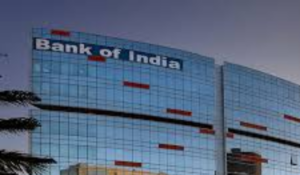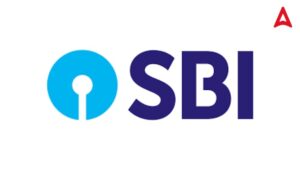Dear Aspirants,
SBI PO/Clerk Mains Banking Awareness Quiz
With the increased competition in the field of banking examinations, it has now become very important to cover up all the sections efficiently. One subject that can help you bagging graceful marks in the minimum time in these examinations is Banking Awareness. Banking Awareness Quiz not only helps you deal with the General Awareness Section of Banking Exams but also, the Personal Interview round of Banking Recruitment.
Q1. Under OLTAS, only a Single Copy Challan is used with a tear-off portion for the Tax Payer. What does OLTAS stand for-?
On-line Tax Accounting Service
On-line Tax Amounting System
On-line Timing Accounting System
On-line Tax Association Service
On-line Tax Accounting System
Solution:
Online Tax Accounting System (OLTAS) was introduced in June 2004.
Q2. What is the minimum period of maturity prescribed for Commercial Paper (CP)?
17 Months
14 Days
01 Year
07 days
05 years
Solution:
CP can be issued for maturities between a minimum of 7 days and a maximum of up to one year from the date of issue. However, the maturity date of the CP should not go beyond the date up to which the credit rating of the issuer is valid.
Q3. Which banks are insured by the Deposit Insurance and Credit Guarantee Corporation (DICGC)?
Foreign Banks functioning in India
Local Area Banks
Regional Rural Banks
All of the above
None of the given options is true
Solution:
Banks covered by Deposit Insurance Scheme-
All commercial banks including the branches of foreign banks functioning in India, Local Area Banks and Regional Rural Banks. Co-operative Banks - All eligible co-operative banks as defined in Section 2(gg) of the DICGC Act are covered by the Deposit Insurance Scheme. All State, Central and Primary co-operative banks functioning in the States/Union Territories which have amended their Co-operative Societies Act as required under the DICGC Act, 1961, empowering RBI to order the Registrar of Co-operative Societies of the respective States/Union Territories to wind up a co-operative bank or to supersede its committee of management and requiring the Registrar not to take any action for winding up, amalgamation or reconstruction of a co-operative bank without prior sanction in writing from the RBI, are treated as eligible banks. At present all Co-operative banks are covered by the Scheme. The Union Territories of Lakshadweep and Dadra and Nagar Haveli do not have Co-operative Banks.
Q4. What is the maximum period of maturity prescribed for Commercial Paper (CP)?
10 years
06 years
01 Year
02 years
05 years
Solution:
CP can be issued for maturities between a minimum of 7 days and a maximum of up to one year from the date of issue. However, the maturity date of the CP should not go beyond the date up to which the credit rating of the issuer is valid.
Q5. Each depositor in a bank is insured by DICGC upto a maximum of _____________________ for both principal and interest amount held by him in the same capacity and same right as on the date of liquidation/cancellation of bank's licence or the date on which the scheme of amalgamation/merger/reconstruction comes into force.
Rs.1,00,000
Rs.2,00,000
Rs.3,00,000
Rs.4,00,000
Rs.5,00,000
Solution:
Initially, under the provisions of Section 16(1) of the DICGC Act, the insurance cover was limited to 1,500/- only per depositor(s) for deposits held by him (them) in the "same right and in the same capacity" in all the branches of the bank taken together. However, the Act also empowers the Corporation to raise this limit with the prior approval of the Central Government. Accordingly, the insurance limit was enhanced from time to time as follows:
5,000/- with effect from 1st January 1968.
10,000/- with effect from 1st April 1970.
20,000/- with effect from 1st January 1976.
30,000/- with effect from 1st July 1980.
1,00,000/- with effect from 1st May 1993 onwards.
Q6. In January 2019, LIC has completed the process of picking up a controlling ___________________ stake in the nearly crippled IDBI Bank.
51%
49%
75%
25%
100%
Solution:
In January 2019, LIC completed the process of picking up a controlling 51% stake in the nearly crippled IDBI Bank. IDBI Bank has been categorized as a ‘private sector bank’ with effect from 21st January 2019.
Q7. Reserve Bank of India has provided no objection to ________________ for the proposed acquisition of Gruh Finance.
Lakshmi Vilas Bank
Bandhan Bank
IDFC Bank
Kotak Mahindra Bank
India Post Payments Bank
Solution:
Reserve Bank of India provided no objection to Bandhan Bank for the proposed acquisition of Gruh Finance. Gruh Finance Limited is an Ahmedabad headquartered Subsidiary of HDFC Limited.
Q8. Which of the following Bank has signed a pact with the Bank of China to boost business opportunities recently?
ICICI Bank
Punjab National Bank
State Bank of India
HDFC Bank
Axis Bank
Solution:
The country’s largest lender State Bank of India has signed a pact with the Bank of China to boost business opportunities. SBI has signed an MoU to enhance business synergies between both the banks.
Q9. The Reserve Bank of India has slapped a penalty of ____________________ on Punjab National Bank for non-compliance of regulatory directions with regard to SWIFT operations.
Rs 5 crores
Rs 7 crores
Rs 11 crores
Rs 2 crores
Rs 14 crores
Solution:
The Reserve Bank of India has slapped a penalty of Rs 2 crore on Punjab National Bank for non-compliance of regulatory directions with regard to SWIFT operations. SWIFT is a global messaging software used for sharing information on inter-bank transactions by financial entities.
Q10. Bandhan Bank Limited is an Indian banking and financial services company headquartered in-
Mumbai
New Delhi
Lucknow
Patna
Kolkata
Solution:
Bandhan Bank Ltd. is an Indian banking and financial services company headquartered in Kolkata, West Bengal. Bandhan, which started as a micro-finance company in 2001, received banking licence by Reserve Bank of India in 2014.
Q11. In which year, Reserve Bank of India was nationalised?
1956
1949
1935
1937
1921
Solution:
The Reserve Bank of India was nationalised with effect from 1st January 1949 on the basis of the Reserve Bank of India (Transfer to Public Ownership) Act, 1948. All shares in the capital of the Bank were deemed transferred to the Central Government on payment of a suitable compensation.
Q12. Which of the following is/are the basic function/functions of Reserve Bank of India?
Regulate the issue of Bank notes and keeping of reserves with a view to securing monetary stability in India
Operate the currency and credit system of the country to its advantage
Modern monetary policy framework to meet the challenge of an increasingly complex economy
Maintain price stability while keeping in mind the objective of growth
All of the above options are the basic functions of Reserve Bank of India
Solution:
The Preamble of the Reserve Bank of India describes the basic functions of the Reserve Bank as:-
"to regulate the issue of Bank notes and keeping of reserves with a view to securing monetary stability in India and generally to operate the currency and credit system of the country to its advantage; to have a modern monetary policy framework to meet the challenge of an increasingly complex economy, to maintain price stability while keeping in mind the objective of growth."
Q13. The Reserve Bank's affairs are governed by a central board of directors. The board is appointed by the _________________________ in keeping with the Reserve Bank of India Act.
State Bank of India
Supreme Court of India
Government of India
Ministry of Finance
State Government
Solution:
The Reserve Bank's affairs are governed by a central board of directors. The board is appointed by the Government of India in keeping with the Reserve Bank of India Act.
Q14. The head of RBI is designated as the-?
Governor
Chairman
Managing Director
Chairman cum Managing Director
Director General
Solution:
The head of RBI is designated as the Governor.
Q15. RBI is headed by Governor and not more than ________________ Deputy Governors.
five
six
three
four
two
Solution:
RBI is headed by Governor and not more than four Deputy Governors.





 Bank of India Apprentice Recruitment 202...
Bank of India Apprentice Recruitment 202...
 No Normalisation In SBI Clerk 2025 Mains...
No Normalisation In SBI Clerk 2025 Mains...
 Daily Current Affairs Quiz 2025, 23 Dece...
Daily Current Affairs Quiz 2025, 23 Dece...








